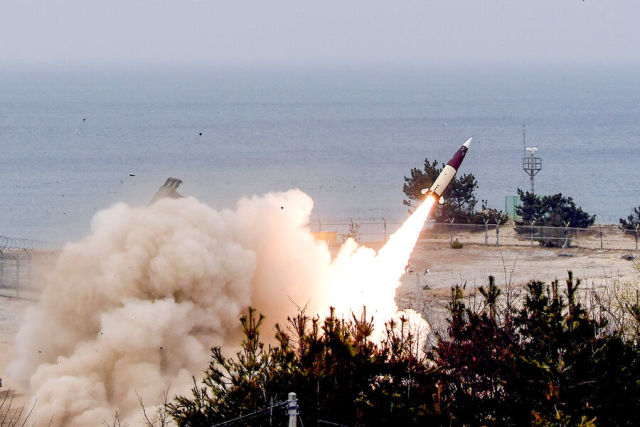NYT: the US administration is quietly discussing the transfer of long-range ATACMS missiles to Ukraine
The US authorities are not publicly discussing whether to supply Ukraine with ATACMS tactical ballistic missiles with a range of 300 km, The New York Times writes, citing sources. At the same time, the Pentagon warns that their arsenal is "small" and may be needed for other purposes. In addition, Kiev has already received long-range missiles from London, Paris has promised similar supplies.
In the administration of US President Joe Biden, there are non-public debates about the supply of ATACMS tactical ballistic missiles with a range of 300 km to Ukraine, The New York Times newspaper writes, citing sources.
"Two American and one European official described secret discussions within the Biden administration about whether to supply at least a few surface-to-surface guided missiles," the publication says.
ATACMS are long-range guided missiles that can hit a target at a distance of up to 310 km with an accuracy of 1 m. They can also be fired from the M270 MLRS and M142 HIMARS multiple rocket launchers, which the Ukrainian army already has.
Washington's Doubts
Representatives of the Pentagon, according to the publication, warned that the arsenal of ATACMS is "relatively small", and the missiles are intended for other plans of the Ministry of Defense, including on the Korean Peninsula.
The rocket development company Lockheed Martin reported that only about 4 thousand ATACMS have been manufactured since the 1980s.
The newspaper points out that Washington has not yet decided to transfer missiles to Kiev, although it recognizes that the Ukrainian troops do not have enough shells for a counteroffensive.
The NYT writes that Kiev has been "longing to receive" such weapons, but the Pentagon believes that Ukraine "does not need them now." The United States has repeatedly stated that it does not intend to supply Ukraine with ATACMS.
Ukrainian Defense Minister Oleksiy Reznikov said a day earlier that he was "absolutely sure that everything impossible now" would become possible.
According to him, he is in touch with American officials about ATACMS, as well as with the German authorities about the Taurus cruise missiles, which have a range of about 500 km.
In turn, the head of the German Defense Ministry, Boris Pistorius, said that the country refused to supply German Taurus missiles to Ukraine.
"If individual partners do it, it is their sovereign decision. We do not intend to change our position," Pistorius said.
Bundestag deputy Roderich Kiesewetter reported that 10 years ago for the Bundeswehr (German armed forces. - "Newspaper.Ru") purchased about 600 Taurus missiles, of which about 150 are ready for operation.
What missiles does Ukraine already have
On the eve of French President Emmanuel Macron announced the decision of Paris to transfer to Kiev cruise missiles with a range of up to 250 km (60 km less than ATACMS). Reuters clarified that some of them have already been delivered, and the total number of these missiles is 50 pieces.
The Ukrainian army is already using Storm Shadow cruise missiles (with a range of more than 250 km), which were handed over to Kiev by the United Kingdom in May. The acting governor of the Kherson region, Vladimir Saldo, stated that the Ukrainian military used them to strike at the Chongarsky Bridge, as well as at facilities in Skadovsk and Genichesk in the south of the region.
Russia in the course of military operations in Ukraine uses MLRS "Grad", "Tornado" and "Sun", as well as missiles "Caliber", "Dagger" and "Iskander", it follows from the reports of the Ministry of Defense of the Russian Federation.
Kalibr cruise missiles are capable of carrying 200-450 kg of explosives and hitting targets at a distance of more than 1000 km, and Kinzhal hypersonic missiles with a 500 kg warhead can reach speeds of up to 14.7 thousand km / h. The target range, according to various sources, is from 2 to 3 thousand km. Iskander ballistic missiles hit objects at a distance of 500 km.
Russian President Vladimir Putin stated that "the more long-range Western systems arrive in Ukraine, the further we will be forced to move the threat away from our borders."
Alice Andreeva

